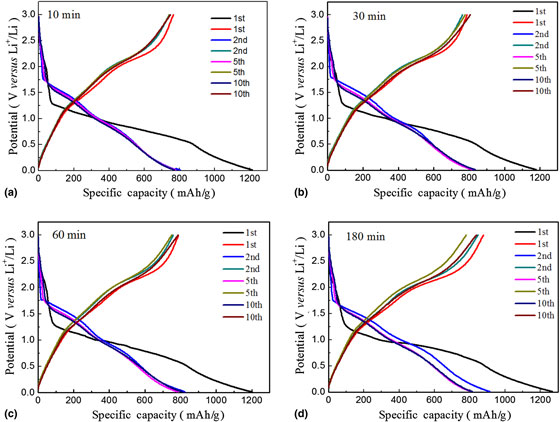Crossref Citations
This article has been cited by the following publications. This list is generated based on data provided by
Crossref.
Wang, Fan
Zhuo, Hong-Yan
Han, Xiguang
Chen, Wen-Miao
and
Sun, Di
2017.
Foam-like CoO@N,S-codoped carbon composites derived from a well-designed N,S-rich Co-MOF for lithium-ion batteries.
Journal of Materials Chemistry A,
Vol. 5,
Issue. 44,
p.
22964.
Zhao, Xingru
Zhang, Xiong
Li, Chen
Sun, Xianzhong
Liu, Jin
Wang, Kai
and
Ma, Yanwei
2019.
High-Performance Lithium-Ion Capacitors Based on CoO-Graphene Composite Anode and Holey Carbon Nanolayer Cathode.
ACS Sustainable Chemistry & Engineering,
Vol. 7,
Issue. 13,
p.
11275.
Liu, Hao
Li, Dong
Ji, Xueyang
and
Lu, Qifang
2019.
Rational Synthesis of Hierarchical Bramble‐Shaped Co/CoO Nanofibers with Enhanced Lithium Storage Properties.
Energy Technology,
Vol. 7,
Issue. 2,
p.
288.
Wan, Baicen
Guo, Jiangcheng
Lai, Wei-Hong
Wang, Yun-Xiao
Liu, Min
Liu, Hua-Kun
Wang, Jia-Zhao
Chou, Shu-Lei
and
Dou, Shi-Xue
2020.
Layered mesoporous CoO/reduced graphene oxide with strong interfacial coupling as a high-performance anode for lithium-ion batteries.
Journal of Alloys and Compounds,
Vol. 843,
Issue. ,
p.
156050.
Saikia, Diganta
Deka, Juti Rani
Lin, Cheng‐Wei
Lai, Yuan‐Hung
Zeng, Yu‐Hao
Chen, Po‐Hung
Kao, Hsien‐Ming
and
Yang, Yung‐Chin
2020.
Insight into the Superior Lithium Storage Properties of Ultrafine CoO Nanoparticles Confined in a 3 D Bimodal Ordered Mesoporous Carbon CMK‐9 Anode.
ChemSusChem,
Vol. 13,
Issue. 11,
p.
2952.
Sehrawat, Poonam
Abid, Abid
Islam, Saikh S.
Mauger, Alain
and
Julien, Christian M.
2020.
Nanostructured Graphene Oxide-Based Hybrids as Anodes for Lithium-Ion Batteries.
C,
Vol. 6,
Issue. 4,
p.
81.
Feng, Wenliang
Avvaru, Venkata Sai
Maça, Rudi Ruben
Hinder, Steven J.
Rodríguez, Miguel Castillo
and
Etacheri, Vinodkumar
2021.
Realization of High Energy Density Sodium-Ion Hybrid Capacitors through Interface Engineering of Pseudocapacitive 3D-CoO-NrGO Hybrid Anodes.
ACS Applied Materials & Interfaces,
Vol. 13,
Issue. 24,
p.
27999.
Farghaly, Fatma E.
and
Shenouda, Atef Y.
2021.
Electrochemical behavior of negative electrode from Co(OH)2 and graphene for lithium batteries.
Journal of Materials Science: Materials in Electronics,
Vol. 32,
Issue. 12,
p.
16139.
Li, Yun
Yang, Wang
Tu, Zhiqiang
Tian, Xiaojuan
Hou, Liqiang
Xiao, Zhihua
Jiang, Bo
Wu, Ni
Li, Qi
Wang, Xin
and
Li, Yongfeng
2021.
Water-soluble salt-templated strategy to regulate mesoporous nanosheets-on-network structure with active mixed-phase CoO/Co3O4 nanosheets on graphene for superior lithium storage.
Journal of Alloys and Compounds,
Vol. 857,
Issue. ,
p.
157626.
An, Qi
Zhao, Xingru
Suo, Shuangfu
and
Bai, Yuzhu
2021.
Novel Lithium-Ion Capacitor Based on a NiO-rGO Composite.
Materials,
Vol. 14,
Issue. 13,
p.
3586.






